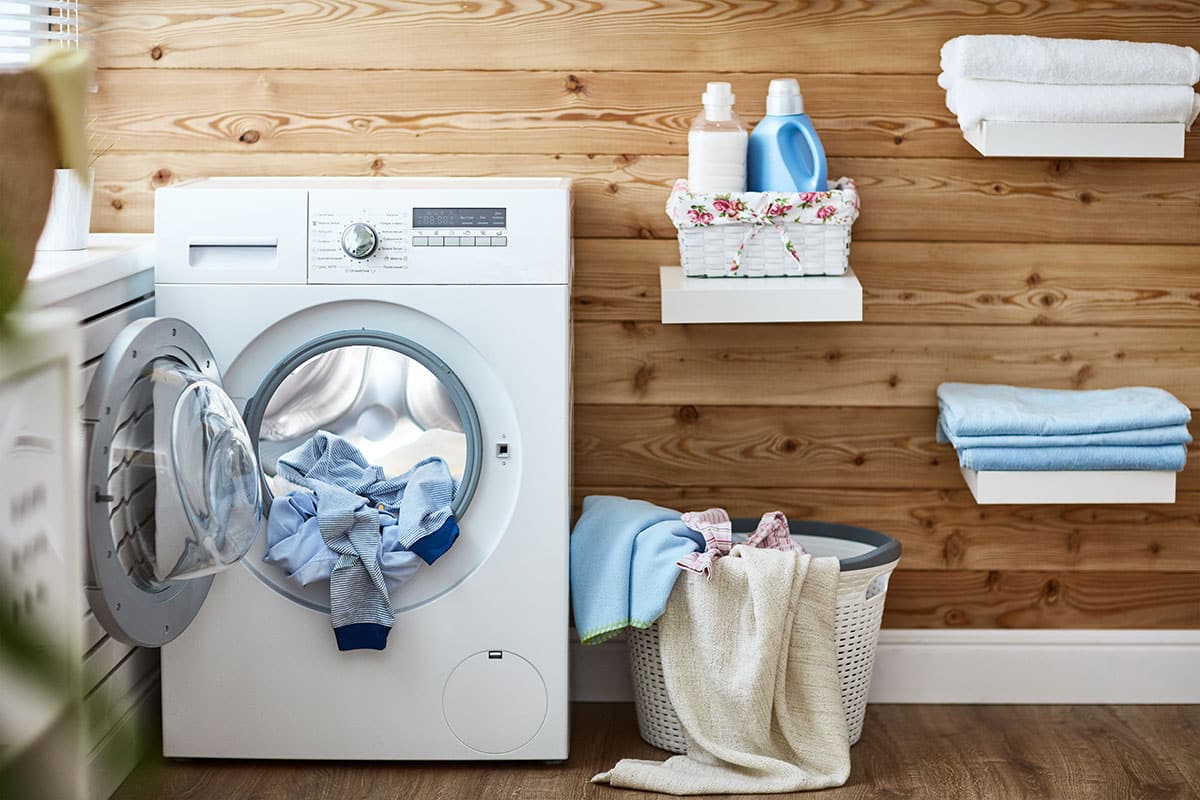We've independently reviewed this article to make sure it's as accurate as we can make it.
To find out more about our article creation and review process, check out our editorial guidelines.
Does your washer keep banging like it’s playing the drums for Guns N’ Roses?
Then it’s time to turn down the volume and restore peace to your home. Washer banging noises are a headache-inducing annoyance and could signal an underlying issue that needs fixing.
This article will cover nine straightforward troubleshooting steps to fix your washer’s banging.
We’ll explore potential causes such as unbalanced loads, worn suspension parts, and loose drive belts, to name a few.
Ready? Let’s stop that washer banging.
Solving A Washer That Keeps Banging
A washer that keeps banging could mean many things, so, in my opinion, there’s no reason to start looking for a replacement appliance just yet. In many cases, the banging noise can be ignored as long as you can handle it and your TV volume is loud enough! But in certain scenarios, the washer will require attention.
Here’s my usual advice for when I see a washer that’s making a banging noise:
#1: Level Up and Balance Your Washer
Before hunting for gremlins in your washer, check that the washer is leveled. A wobbly washer can cause a lot of noise during the spin cycle.
Grab your trusty level (or use a leveling app on your smartphone) and place it on top of the washer, both front to back and side to side. If the bubble isn’t centered, adjust the washer’s legs until it’s balanced.
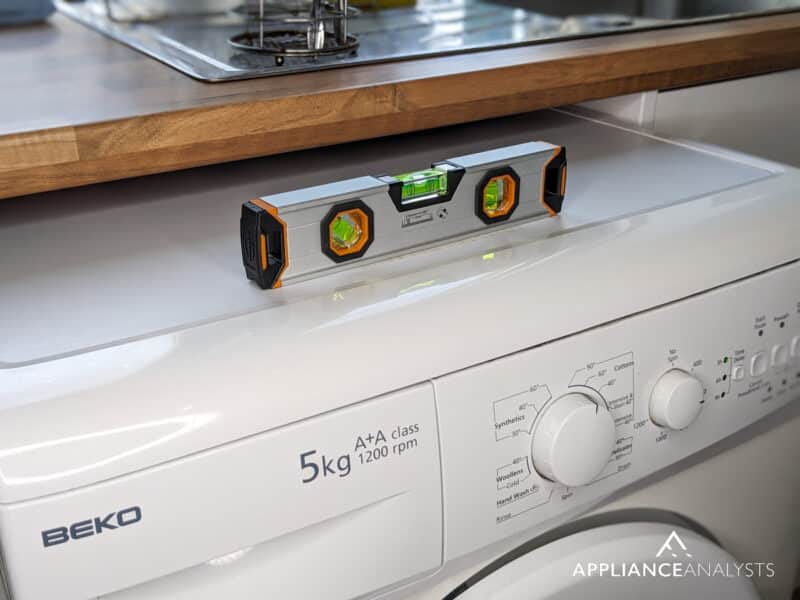
In addition, due to uneven floors, especially tile, it’s also a good idea to gently shake the washer with your finger placed between the front feet and the floor. Adjust the legs until the washer doesn’t move. Now you’re ready to rock and roll – minus the noise.
#2: Check the Load Size
Exceeding the maximum load capacity could also explain why your washer is banging so much and could even force you to mess with the machine’s temperature settings to get the right results.
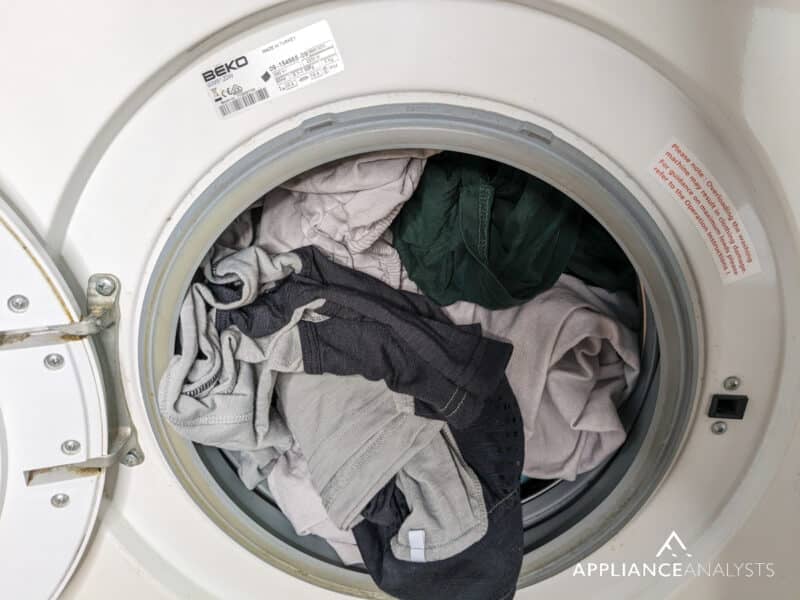
Before diving into the nitty-gritty, ensure you’re not overloading your washer or mixing heavy items with lighter ones.
Instead, distribute your laundry evenly and always follow your manufacturer’s instructions. In my opinion, proper loading does the trick often.
#3: Check for Unbalanced Loads
An unbalanced load is one of the most common reasons a washer makes banging noises during the spin cycle. When clothes are not evenly distributed in the drum, the washer can become off-balance, causing it to shake and make loud noises.
To prevent unbalanced loads:
- Make sure to load your washer evenly, distributing clothes around the drum as uniformly as possible. Avoid overloading your washer, as overloading can make it more difficult for the clothes to move and spread evenly.
- If you notice your washer making banging noises during a cycle, manually pause the cycle and redistribute the load, as this can help to even out the weight inside the drum and reduce the noise.
- Remember that certain items, like heavy blankets or large towels, can quickly become unbalanced during the spin cycle. Consider washing towels, duvets, and heavy blankets separately or with similarly sized items to maintain a balanced load.
Regularly checking for unbalanced loads can help prevent excessive noise and prolong the life of your washer.
#4: Evaluate the Suspension Springs
Suspension springs are like your washer’s personal gymnasts, helping it bounce back when things get rough. Depending on your washer model, the suspension springs will typically be located around the top of the tub or at the base.
First, unplug your washer and remove the front panel to inspect the springs. Check for any signs of stretching, damage, or dislocation. If the strings aren’t in tip-top shape, I tend to find that replacing them with fresh ones is always a good idea.
#5 Check the Weights
Front load washers are known for making banging sounds when the weights inside them are cracked or damaged in any way. The weights inside front load washers keep the appliance level balanced.
To check your washer’s weights, please follow the steps below:
- Unplug the washer from the wall outlet.
- Remove the top panel of the washer
- Remove the front panel.
- Take off the door boot.
- You should now see the weights.
- Remove the bolts holding the weights in place (normally, there are 4).
- Place a new weight and reassemble.
Replacing a cracked or damaged front load washer weight can stop the loud banging sooner than you can say, “I fixed it“!
#6 Check the Suspension Rods
Dry suspension rods could also explain why your washer keeps banging like crazy.
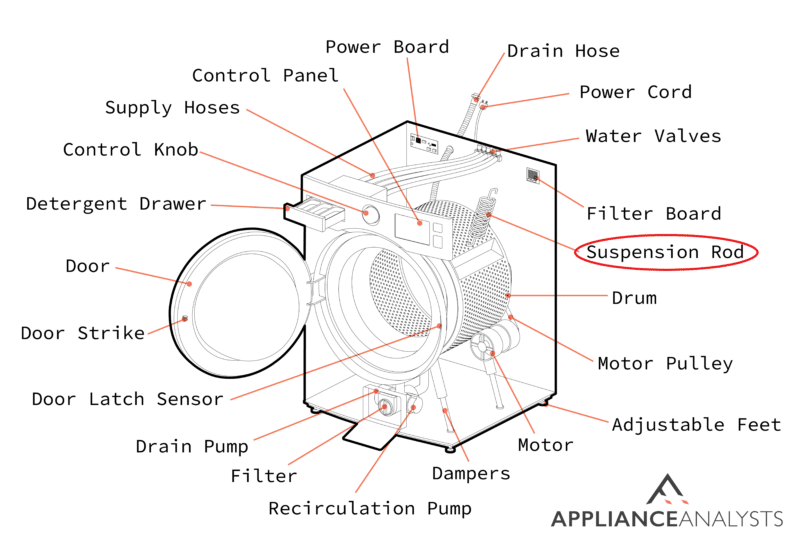
LG top load washers are known for having dry rods, which is a situation that occurs when the lubricant that makes the rods’ motion smooth starts to dry out, which can happen for many reasons, including using too much soap.
If you suspect your washer’s dry rods need lubrication, please check your User Manual to identify the rods within your appliance or contact a professional for help.
#7: Inspect the Drive Pulley
The drive pulley is like your washer’s spin master, responsible for rotating the tub during the spin cycle. The pulley is usually attached to the motor at the bottom of the machine.
Unplug your washer and remove the front panel to access the drive pulley. Check for any wear or damage, such as cracks or loose connections.
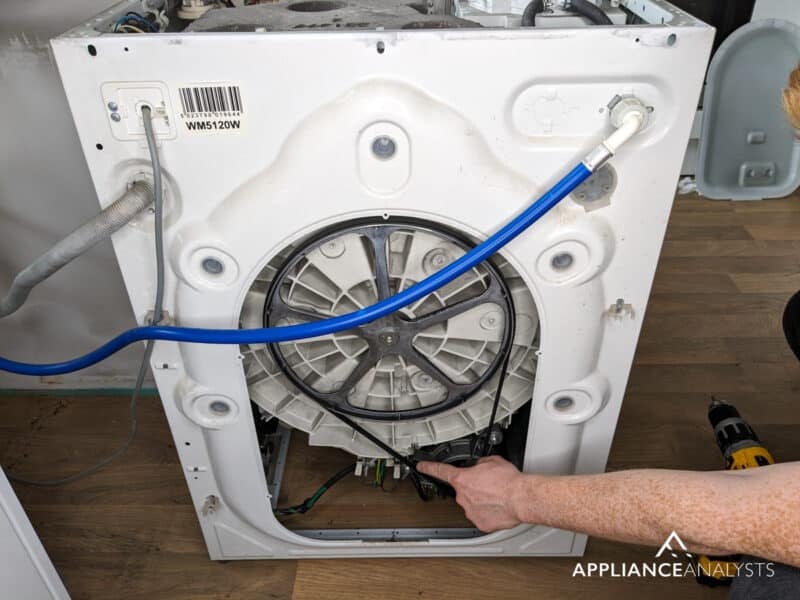
If the pulley looks like it’s seen better days, it’s time to replace it to restore harmony to your laundry room.
#8: Check the Drive Block
The drive block transfers the motor’s rotational movement to the drum. If the drive block is damaged or worn, it can cause the drum to wobble and create a banging noise during the spin cycle. To inspect the drive block:
- Unplug your washer and remove the agitator (if applicable).
- Locate the drive block, which sits atop the washer’s transmission shaft and is usually secured by a nut or retaining clip.
- Check the drive block for signs of wear or damage, such as stripped threads or a loose fit on the transmission shaft.
- If the drive block appears damaged or worn, replace it to resolve the banging noise.
Remember that drive block issues are more common in top-loading washers. If you have a front-loading washer, the drive block might not be the cause of the banging noise.
#9: Check the Spider Arm Assembly
The spider arm assembly, also known as the drum support, is an essential component in front-loading washers. The spider arm assembly connects the inner drum to the back of the outer tub and helps to keep the drum stable during operation.
If the spider arm assembly is corroded or broken, it can cause the drum to wobble and create a banging noise during the spin cycle.
To check the spider arm assembly:
- Unplug your washer and remove the rear panel to access the spider arm assembly.
- Inspect the assembly for signs of corrosion, wear, or damage, such as cracked or broken arms.
- If the spider arm assembly appears damaged or corroded, you must replace it to resolve the banging noise.
Keep in mind that replacing the spider arm assembly is a complex and time-consuming process. Consider hiring a professional technician to handle the repair, especially if you’re not experienced with appliance repairs.
Conclusion:
There are nine steps to help silence your washer’s impromptu drum solos. By following the above tips and tricks, you’ll be well on your way to restoring peace and quiet to your laundry room.
The next time your washer starts making a banging noise, remember the steps you learned here and take action.
Your ears, neighbors, and sanity will thank you for it. Remember, when working with appliances, always unplug them before performing maintenance or repairs. Safety first, my friend.
And if you need clarification on any of the steps or feel uncomfortable performing them, feel free to call a professional. After all, there’s no shame in calling for backup when you need it.
Thanks for reading. If you found this article helpful, please check out our other incredible resources below and consider subscribing to our newsletter.
Good luck, and happy washing!
-Craig.
